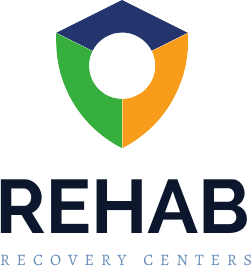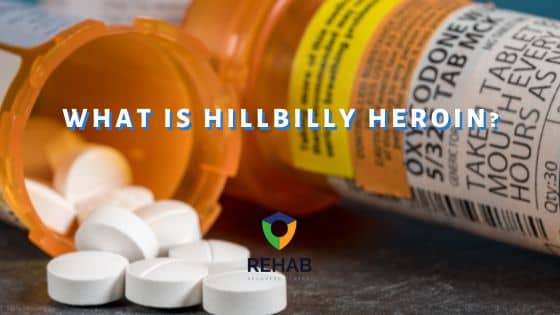Table of Contents
What is Hillbilly Heroin?
“Hillbilly heroin” is a slang term that is sometimes used to refer to oxycodone. In particular, it is used to refer to OxyContin, an opioid medication that has been the center of controversy and multi-million dollar lawsuits. The term comes from the drug’s dark history as an opioid chosen by rural adults, mainly in the Appalachian region, to cope with chronic pain or psychosocial stressors in their lives.[1]
OxyContin is a brand-name drug containing the medication oxycodone. Oxycodone is a semi-synthetic opioid that is more potent than morphine and produces effects that are similar to heroin and other potent opioids. Like other opioids, people often take oxycodone in high doses to experience a state of euphoria or warmth.
Other common side effects of oxycodone abuse include:
- Extreme relaxation
- Drowsiness
- Slowed breathing
- Heaviness in the limbs
- Nodding off, or altering back and forth between states of consciousness
In high doses, opioid overdose is possible. An overdose happens when a person with a low tolerance to opioids takes a dose that is so high that it stops their breathing and slows down other functions in the central nervous system. Aside from shallow or stopped breathing, other symptoms of opioid overdose include:
- Pinpoint pupils
- Cold, clammy skin
- Bluish colored lips or fingertips
- Loss of consciousness
- Making gurgling noises
Where Does The Name “Hillbilly Heroin” Come From?
Hillbilly heroin specifically describes the widespread use of OxyContin or oxycodone among rural Americans, but why exactly is this term so popular? First of all, oxycodone is molecularly similar to heroin and produces similar effects, so it makes sense that the medication may be compared to heroin.
The term “hillbilly,” however, has a much more complex origin. Hillbilly is a slang term that is sometimes used in a derogatory way. A hillbilly sometimes refers to an unsophisticated or uneducated person who lives in a rural or remote area. More commonly, hillbilly is used to describe low-income people who live in rural Appalachia.
In order to understand how OxyContin, the opioid epidemic, and the Appalachian region are connected, one must understand a brief history of the opioid epidemic.
Understanding the Opioid Epidemic in Appalachia
In the 1990s, medical practitioners began to rely more heavily on prescription opioid medications to treat patients suffering from acute and chronic pain. By the 2010s, it became clear that opioids like OxyContin were far more addictive than the medical community had been led to believe by pharmaceutical companies. Unfortunately, too many people were addicted and others relied on opioids to cope with their pain, so it was too late to stop an already mounting opioid epidemic.
By 2017, opioid prescription rates were 45% higher in Appalachian counties than in the remainder of the country.[2] Part of the reason for this is because Appalachia was home to many coal mining facilities and workers–a laborious industry that is infamous for injury and workers struggling with pain. In fact, coal mining is one of the most dangerous, injury-prone professions in the country.[3]
Due to high demand, Appalachian coal miners and others found themselves with easy access to opioids. And, unfortunately, many became addicted. Those who fell into the grips of opioid addiction often relied on doctor shopping–going from one doctor to the next to try and secure multiple prescriptions–to continue their addictions. Doctors in the area were rumored to be very relaxed when it came to their opioid prescribing practices, making it easier for patients to doctor shop. After all, many of these physicians had been falsely led to believe that oxycodone was far less addictive than it actually is.
There are many socioeconomic factors that have fueled the opioid epidemic in Appalachia, ranging from poverty and poor health to low educational attainment and changes to the labor force. All of these factors created a perfect recipe for an opioid epidemic in this part of the nation.[2]
Since many of these hard-working Americans of the Appalachian region were known as hillbillies, and the region has been ground zero for the United States’ opioid epidemic, the term “hillbilly heroin” emerged as a nickname for prescription painkillers.
Find Help for Prescription Opioid Addiction Today
Today, the opioid epidemic is a nationwide problem. It isn’t something that only affects rural Americans or coal miners in Appalachia. It is something that can affect anyone.
Opioids are powerful, addictive, and dangerous drugs. And, with deadly synthetic opioids like fentanyl existing in all corners of the black market drug supply, opioid abuse and addiction are more life-threatening than ever. According to the CDC, opioid overdose deaths have officially topped 100,000 people annually.[4]
The decision to get help versus continuing your addiction is a life or death matter. At Rehab Recovery Centers, our team of qualified admissions coordinators is committed to helping you find the resources you need for recovery. Don’t wait any longer to get the life-changing care you deserve. Call now.
References:
Get Help Today
Don’t go through the process of recovery alone. There are people who can help you with the struggle you’re facing. Get in touch with one today.


